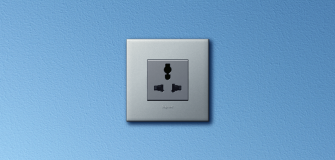Types, Ratings and Working Principle Of MCCBs
Undoubtedly, electricity, on which people are becoming more and more dependent, is one of the most crucial aspects of people’s lives. It is now necessary to act wisely and sensibly in order to decrease the consumption of the electricity supply. You must take a preliminary step to manage electronic systems and the flow of current.
Every day there is a greater chance that the circuit will sustain serious damage because of the extreme flow of current and tripping. In order to avoid and mitigate hazardous circumstances, LVS (Low Voltage Switchgears) are often used to safeguard against fatalities and short circuits. One of these electronic pieces of equipment is the MCCB.
What Is An MCCB?

In both normal and pathological circuit circumstances, a device known as an MCCB (Moulded Case Circuit Breaker) is required to generate, carry, and interrupt currents across several contacts. Examples of unnatural current conditions include overload and short circuit problems, and they also protect low-voltage distribution networks. Wherever adjustable tripping is necessary, MCCB is used. It is often used for high-current applications and can be manually adjusted to trip the circuit.
The two main uses of MCCBs are for low and high breaking capacity requirements. Therefore, it is most frequently used in industrial complexes.
It protects against the surplus current, which may cause overload or short circuit conditions in an electrical circuit.
Types Of MCCBs
Based on the different sorts of trips, MCCBs are divided into five classes.
- Type B: When the fault current is 3 to 5 times the maximum discharge current, they start to operate. It is used in domestic applications, including resistive loads and lighting loads, among others. The operating time of this beaker is 0.04 to 15 seconds.
- Type C: Generators, soldering equipment, solenoids, etc., are examples of inductors and capacitors for which a type C breaker is intended primarily. It has an operating range of 5 to 8 times the full load current and has a delay time of 0.04 to 5 seconds.
- Type D:For high starting current applications such as engines, compressors, and lifts, type D is created. Its operating spectrum is 10 to 15 times, and its spatial endurance is between 0.04 and 3 seconds.
- Type K: Type K begins to function when the current is eight to ten times more than the maximum load current. The best feeder protection is provided by type K MCCBs, which can operate for up to 5 seconds at a time.
- Type Z: MCCBs of Type Z are very sensitive and can tolerate 1.5 to 3 times the maximum load current. When high-speed tripping is necessary, Type Z is suitable for electronic loads.
Ratings And Features For MCCB
Manufacturers of MCCBs are obligated to disclose information about the MCCB’s operational features. Some of the most prominent parameters include the following:
- Rated Frame Current (Inm):Rated Frame Current is the maximum current that an MCCB can handle (Inm). The rated frame current, which also establishes the adjustable trip current range, dictates the size of the breaker frame.
- Current Rated (In): The MCCB trips due to overload protection based on the rated current value. The limit of this figure is the rated frame current.
- Insulation Rated (Ui) voltage: This figure represents the highest voltage that an MCCB can tolerate in a testing environment. An MCCB’s rated voltage is normally lower than this figure to offer a safety buffer.
- Working Voltage Specified (Ue): The MCCB is intended to function at this voltage continuously. It typically matches the system voltage or is quite close to it.
- Short-circuit Breaking Capacity in Use (Ics):After a fault interruption operation, MCCBs are normally still operable if they don’t exceed this limit for short-circuit breaking capacity in use (Ics). The greater the Ics, the more reliable the circuit breaker.
- Capacity for Ultimate Short Circuit Breaking (Icu):The MCCB won’t trip if the fault current exceeds this threshold, per the ICU (ultimate short circuit breaking) capacity. In this circumstance, you must activate a different security measure with a stronger breaking potential. This shows how dependable the MCCB’s activities are. It is crucial to remember that even if the fault current exceeds Ics but not Icu, the MCCB can still solve the issue, even though it might be damaged and need to be replaced.
- Mechanical Life: The amount of manual operations the MCCB can withstand before failing.
- Electrical Life: The number of trips an MCCB can withstand before failing is its electrical life.
Legrand provides a wide range of MCCBs appropriate for use in both residential and commercial applications. Our designs, which are the best in the business, are built to be reliable, safe, and simple to wire.




















